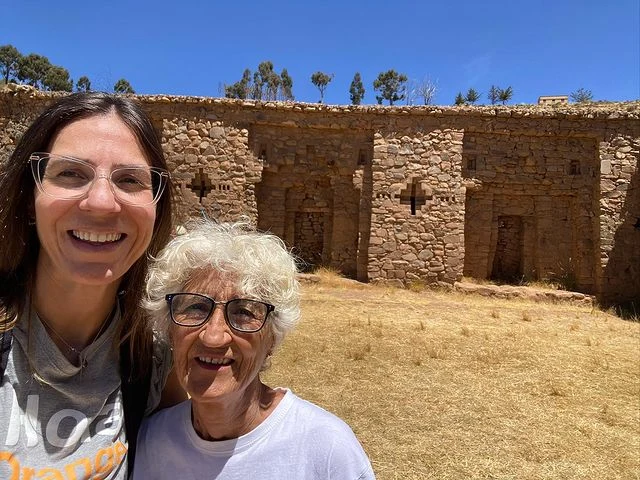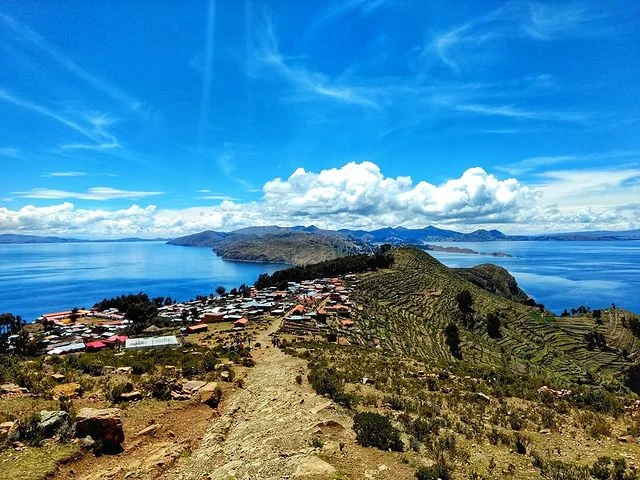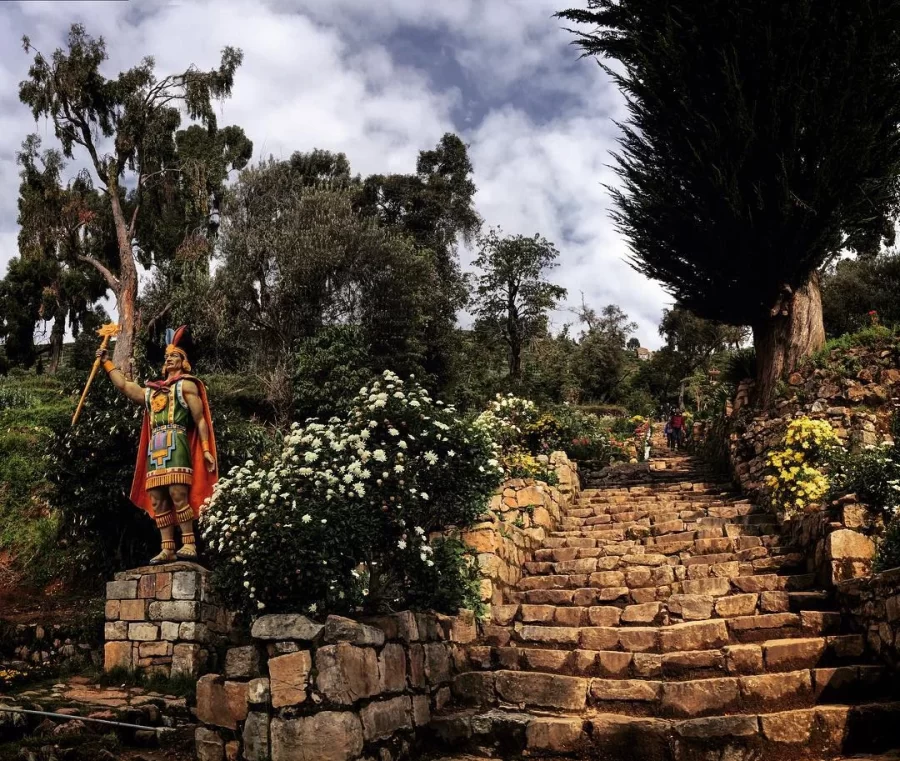
The Moon Island or Koati Island was essential at the time of the Inca Empire, because here was located the Palace of the Virgin of the Sun or also called Iñakuyu.
After the findings, a temple was found here, the "Acllahuasi" or house of the chosen ones, a place where women were trained to be priestesses, they learned everything about weaving and they could even be the Inca's concubines or were used for sacrifices.
To this island could only enter the Inca, for being the highest authority of the empire, at present the island is home to a number of families of Aymara and Quechua-speaking families who live from tourism, crafts, agriculture and animal husbandry.
Table of Contents
Moon Island is located southwest of La Paz, in Lake Titicaca, and 8 kilometers away from the Isla del Sol, in the department of La Paz, Bolivia. The small island has an area of 105 hectares, being one of the important islands of the Inca Empire.
Moon Island is one of the must-see places in Bolivia that you have to visit:
Suriqui is located in the minor lake of the Titicaca, in this tourist site the totora reed rafts are made, unique transport that allows them to move from one destination to another. Its main attraction to visit is the Artisan Center where they exhibit a variety of their creations.
When you visit the site, the villagers will show you how the rafts are made, the technique they use and in what season they make them.
Iñakuyu, Iñak uyu or Iñak uyo are the names it receives, besides being a place of Inca worship dedicated to the Moon during the Inca empire, the archaeological site is related to the Acllahuasi and the worship of Mama Quilla, so it becomes a relevant site as mentioned at the beginning of this article.
It is also known that here the Incas performed a ceremony called "Coya Raymi". When visiting this temple that is still preserved you can see all its structure made of stones, except for one that is lined with finely carved stones.
About 45 minutes further on you will see the Isla del Sol, where the guide will explain the history of the island and how it came to be one of the most important places.

The Yampupata peninsula is located northeast of Copacabana and is bordered by Isla de la Luna to the north and Isla del Sol to the northwest.
The site has several attractions such as swimming in the cold waters of Lake Titicaca known as “White beaches of Yampupata” from the community of Chani can also visit the community of Kusijata and visit the archaeological site “the bath of the Inca” which has a small museum on site.
If you want to have a better view of Lake Titicaca, then you should go up to the Palla Khasa viewpoint, maybe it will be difficult and demand physical effort, but it is worth it because it will allow you to have a 360° view of the entire Lake Titicaca.

The Cerro El Calvario is a symbol of Lake Titicaca and is located on the coast of Copacabana, where you can have an incredible view of both the town and the lake. To get here you have to climb some stone stairs that take you straight to the top where you will find a chapel in honor of the Virgin of Copacabana.
The perfect time to climb is in the afternoon, because you will have a good view of the sunset and the surrounding landscape of Lake Titicaca. Many tourists and locals make a pilgrimage to Cerro El Calvario on August 5th, in homage to the Black Virgin.
Escalera del Inca is the first thing you will see if you go to Isla del Sol, this imposing climb will make you feel all its living Inca culture, the Andean landscapes and its own archaeology, worth to be visited.
